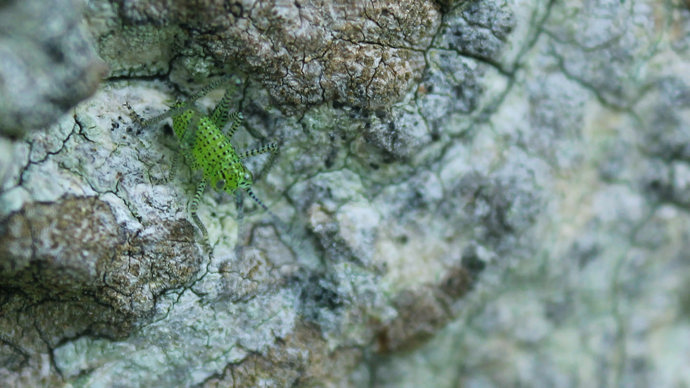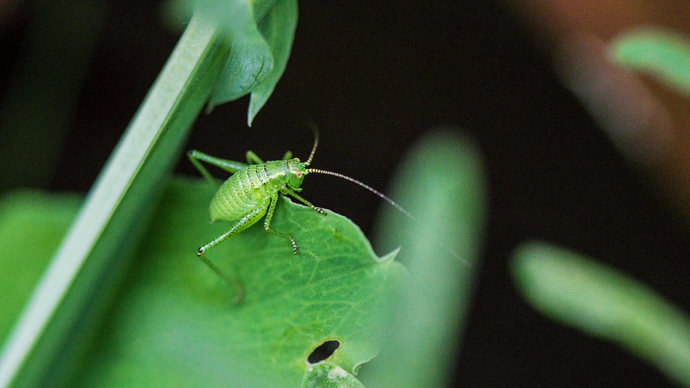Common name(s): speckled bush-cricket
Scientific name: Leptophyes punctatissima
Family: crickets
Habitat: grassland, woodland and gardens
Predators: birds, amphibians, reptiles
Origin: native
What’s bright green, spotty and loves a bramble bush? The speckled bush-cricket thrives in shrubs and grasses in hedgerows and woodland edges.
Common name(s): speckled bush-cricket
Scientific name: Leptophyes punctatissima
Family: crickets
Habitat: grassland, woodland and gardens
Predators: birds, amphibians, reptiles
Origin: native
A small bright green cricket, the speckled bush-cricket is covered in uniform black speckles. They have long thin antennae and females have long curved ovipositor (egg-laying tube) on the rear. When fully mature, the crickets have a dark orange stripe on their backs which is thicker on the male.
Nymphs (young crickets) are smaller with more pronounced speckles and no stripe.
Length: 10-20 millimetres
These crickets are active at dusk and at night. They feed on leaves and flowers.

Credit: Alastair Hotchkiss / WTML
Males attract females by rubbing their wings together to ‘sing’. A female will respond with a quieter song to lead the male to her. Eggs are laid on bark and in plant stems, hatched nymphs (pictured) will overwinter where they are born and emerge in May. They will reach maturity around August, breed, and then die before the winter.
Speckled bush-crickets are common in southern and central England and southern Wales. They favour bushes and tall grasses along woodland edges, hedgerows and grasslands.
They cannot fly. Males only use their wings to sing and rely on their powerful back legs to jump instead.

Credit: Andrew Greaves / Alamy Stock Photo
Look for bush crickets at dusk and in the evening on shrubs and in tall vegetation. You’ll need to listen and look very hard as their song is quiet and they are excellently camouflaged.
The speckled bush cricket is not currently considered under threat.